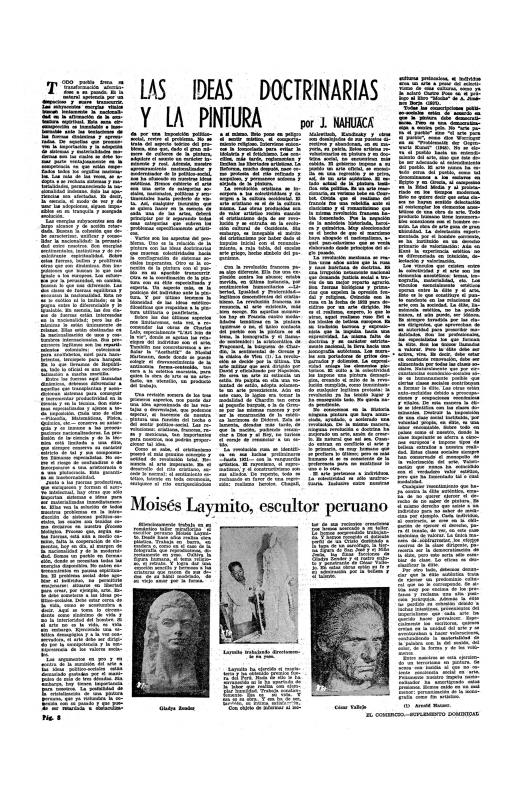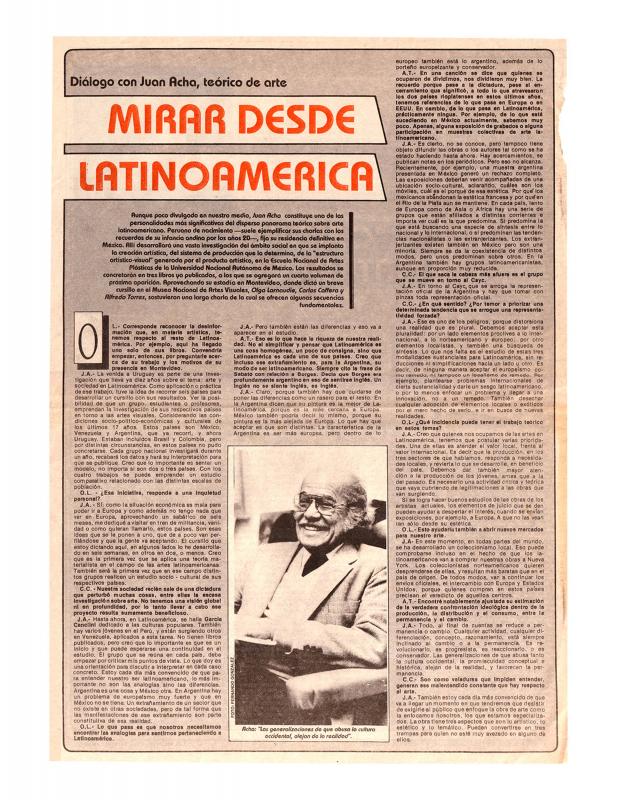This article is an important contribution to the literature on the Venezuelan abstract artist; it may suggest a review on her 1978 exhibition in Mexico City Exposición de la afamada pintora venezolana Mercedes Pardo: 50 óleos, acrílicos, collages y otras técnicas, held at the Museo de Arte Moderno de México. However, the text goes beyond a presentation. The author, Juan Acha (1916–1995), was a leading voice in the historical construction of Latin American art as a field. He was a Peruvian art critic that left his country for Mexico in 1970, following imprisonment during the General Velasco Alvarado regime for his critical stance against the military government. As opposed to other literature on Mercedes Pardo (1921–2005), Acha highlights her search for a language expressing “the two faces of her identity: the artistic one and the Latin American one, the latter as subjective-cultural legacy.” According to him, Pardo’s liberation of color succeeds in a balance of subjective and objective issues and puts color as a current problematic in global art. Acha’s discussion of identity is significant regarding the emergence of modernist expressions in Venezuela, his recognition of a search for a Latin American identity in Pardo’s abstract approach supports an avant-garde insight where it is not necessary to represent local subject matter in order to carry cultural and local meaning.
Acha’s critical discussion of the most significant phases in Pardo’s art doing: from the formative phase of 1952–68 experiments with gestural works, and figurative collages; from 1969, he perceives Pardo’s work shift toward geometry, stressing an attempt to “sensitize geometry” by means of chromaticism, in his view, her greatest contributions in the works of the last decade, which explain the imbalance in the selection of works for the exhibition. Moreover, Acha groups Pardo’s art production (1968–78) in three stances: works that combine curves and right angles; the ones based on orthogonals; and those where color fields coexist with vertical lines or colored stripes.
[For further reading on this exhibition see in the ICAA Digital Archive: Fernando Gamboa, “Mercedes Pardo: Es poco cuanto se diga de su obra” (doc. no. 1331475); and Bélgica Rodríguez, “Abstracción, Espacio y tiempo” (doc. no. 1331443). For other texts by Acha, see “Las ideas doctrinarias y la pintura” (doc. no. 1272963), and “Mirar desde Latinoamérica. Diálogo con Juan Acha, teórico de arte” (doc. no. 1246077).]




